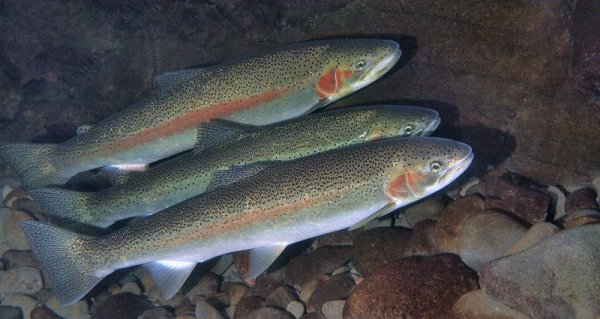The number of trout in a southern Oregon stream system showed no decline one year after a fire burned almost the entire watershed, including riparian zone trees that had helped maintain optimal stream temperatures for the cold-water fish.
The research by Oregon State University sheds light on the ability of steelhead, cutthroat and rainbow trout to endure the higher water temperatures expected to accompany climate change and its manifestations, including increased frequency, extent and severity of wildfires.
“It’s crucial that we improve our understanding of the factors that influence how fish respond to postfire changes in stream temperature,” said the study’s leader, Dana Warren, a researcher in the OSU colleges of Forestry and Agricultural Sciences. “The loss of streamside cover during a fire can lead to substantial increases in stream temperature, but the effects of changes to stream thermal regimes on salmonid fishes can be complicated. The fish in this system proved to be quite resilient to these increased temperatures – at least within the range that we saw here.”
The scientists stress that their findings, which showed an increase in fish numbers in their study areas over the summer, do not indicate that wildfires pose no threat to trout populations. In the study, there did not appear to be an immediate impact during peak water temperatures in summer – which regularly got as high as 24 degrees Celsius – but the researchers did not, for example, assess either long-term or less-than-lethal implications of water temperature increases.
Read more at Oregon State University
Image: Steelhead (Credit: Oregon State University)


